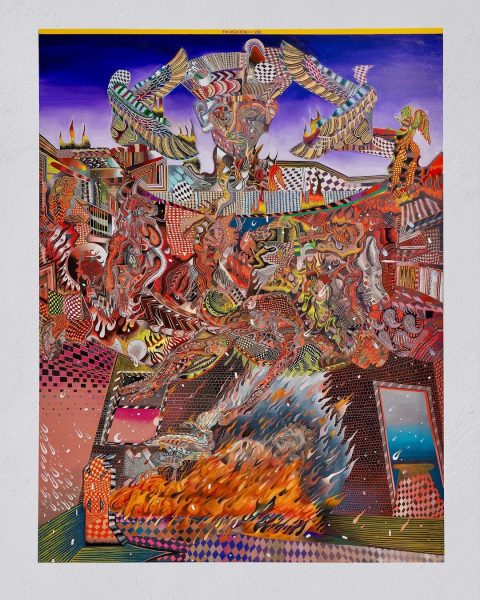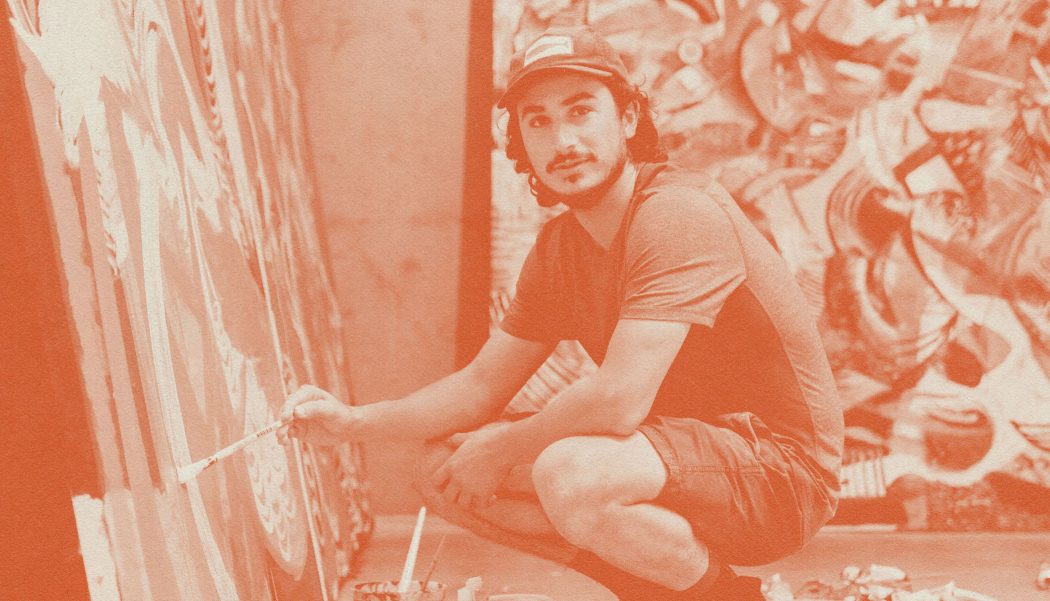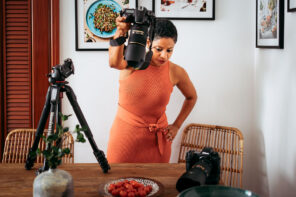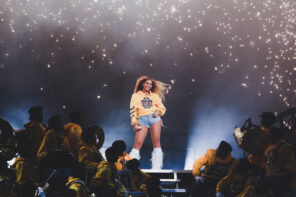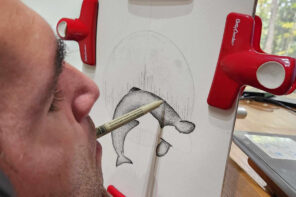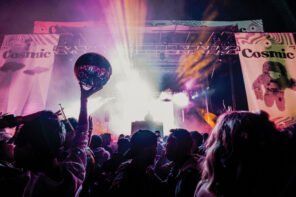Who’s really in control of their art?
@morganmaassen x @zioziegler
Control may mean different things to a photographer than it does to a painter. Photographer and filmmaker Morgan Maassen poses some interesting questions about that and motivation to painter, sculptor and muralist (who might be done with murals) Zio Ziegler. Maassen collects and constructs images and movements from the world through his lens, while Ziegler spreads his thoughts across canvas in oil or on walls in paint and his works can be as much about how the public perceives them (especially his large scale murals in the Mission District of San Francisco and around the world) as what he intended. We’ll let you judge which one might be more in control of his work after reading.
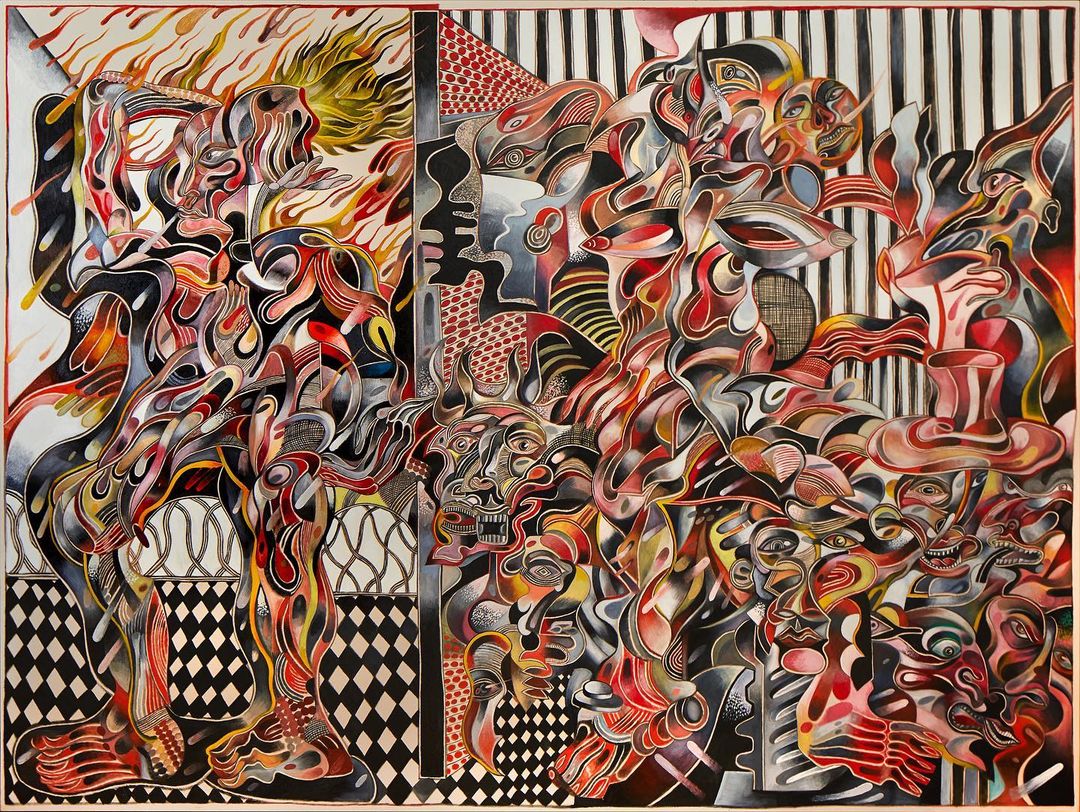
Morgan Maassen: Who are you?
Zio Ziegler: Zio Bernard Ziegler, I’m 32 years old from Northern California.
Morgan: Can you describe your medium and process?
Zio: My favorite mediums are oil on canvas and sculpture. My process? It changes every time. I go into my studio, I listen to a book on tape. And I start with that as the framework for what I’d like to create. Books generally have a theme. That’s where my mind is, and then the work emerges from both an autobiographical place, a resonance with the books I’m reading, a dialogue with the world. I’d like to think it transcends, confines the conceptual art, becomes more humanist—but sometimes it’s just conceptual. I think that it doesn’t start with an agenda in mind.
Morgan: Do you try to express an idea or concept, or capture a feeling or vision?
Zio: I think conceptual art is sometimes so simplified—almost like a process that’s very self-indulgent. It becomes something that’s just a dialogue with itself, a dialogue abstraction, or history. I’m not as interested in that. I do find progress in art history interesting but I do believe history first has to settle itself out in order to see what’s truly going to be relevant. I think a lot of art history is almost being minted before we have a chance to see if it’s going to do better over time. The idea is that I’m not trying to change trends per se, or follow what curators are laying out, but rather flowing between topics, themes, and methods of making work that I find interesting.
At some point, you’re reflecting the things that you see in the world—what you’re reading and what you’re processing. My work isn’t necessarily created for the viewer as much as it is created out of necessity.
Morgan: Do you ever paint with the public’s perception in mind?
Zio: At some point, you’re reflecting the things that you see in the world—what you’re reading and what you’re processing. So I’d say my work isn’t necessarily created for the viewer as much as it is created out of necessity. But I do feel the way that people process my work is a very large part of what the concept inherent in its creation is.
Morgan: How did you find your passion? Who or what influences you?
Zio: Recently I’ve been very interested in speech and how speech works, language and the devices of languages, and how pieces of art and work and cultures act as almost shorthands for temperament. I might read about the crusades for a couple of weeks, but what’s actually attracting me to reading about the crusades are the themes, more so than the facts. So there’s the mode and then the style in the paintings which change, because I want the paintings to be sort of magnetic and enter your life. The paintings are open source hieroglyphs is the best way to put it. They’re in essence, trying to be grandiose, sweeping across different human impulses. They tie all the way back to the first necessity for myth or speech and language. They’re devices that serve as a crossroads of communication. I want them to be very hyper-specific but very general at the same time. To answer questions and dilemmas and problems that people have just like when you read a book, the subtext may answer the personal questions in your life for you. The way the protagonist processes their problems or views the world or encounters difficulties inspires you to do the same. So I think I wanted to go ahead and create things like that which appeal to people as they’re like paintings—when you interpret them in your own way, they serve as a key to help unlock some of life’s mysteries for you. Trying to run the mind against itself.
Morgan: What exhilarates you about making your work?
Zio: For a person like myself, who tends to think in clusters of thoughts, rather than in a linear way, these paintings are the best way for me to attempt to process my clusters of thoughts. There’s a way of processing a challenge in the world and they serve as a dualistic conscience. They’re external in purpose and internal at the same time… that’s the gratifying part of it. You get to speak to people in different ways. You get to go back to the root of language, sort of impulse for communication or to build communities around different thoughts and somewhat homogenize these thoughts. They’re like devices for their own minds, they’re platforms.
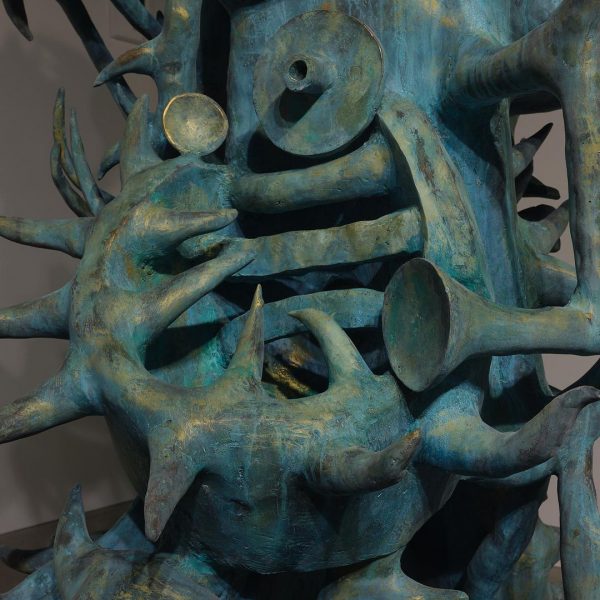
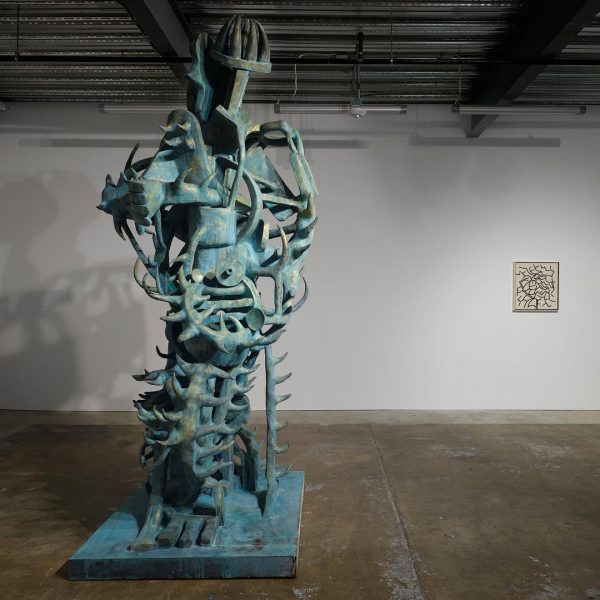
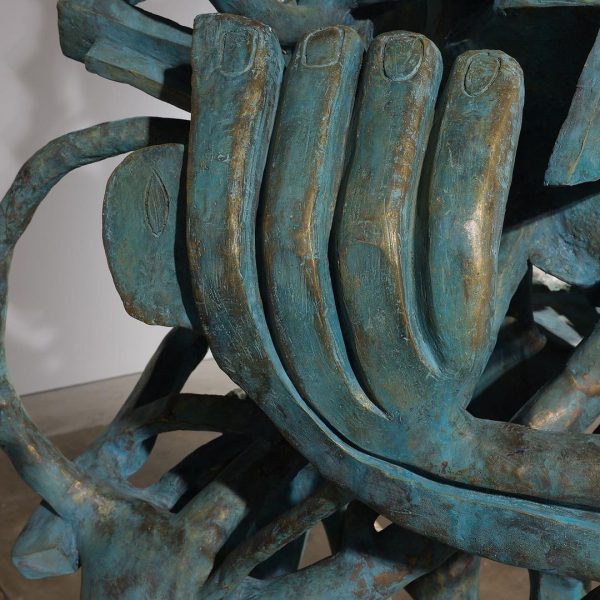
Morgan: Are there any common ideas that you explore across your larger bodies or work?
Zio: I’m trying to look at the themes that I’m curious about and need to examine in my own life. Whether it’s justice or desire. What I’ll do is read about desire, maybe it’s because I’m trying to solve some issue in my own life or because I’m curious about the theme. And how people throughout history process the same challenges. And that reflects in the painting in due course. The paintings are like abstractions of books that I’m reading. But they’re larger abstractions… the first painting may influence the second painting and the third, and it sort of starts on this course where it’s really in dialogue with itself. I use the same motifs frequently, I ask a tremendous amount of the viewer when they’re examining my work. But you can’t expect someone to understand the concept of the anti-concept.
People think that if you contradict yourself, you become something different and that’s a bad thing. I think that’s an awesome thing.
Morgan: Your art constantly evolves. Where is it going? Are you in control of its evolution or do you go where it takes you?
Zio: No, it’s out of control. I think that half the work, upon making it, is not good enough. With work that needs to move forward, I have to make slight conceptual and aesthetic adjustments. I get terribly bored with doing something I figured out how to do. For me, the process of painting is sort of like trying to challenge myself to a new test all the time. Tests of being able to render certain ideas or say certain concepts or confront certain fears. Or even sometimes the work is trying to be in dialogue with paintings from art history, so it’ll go back there and want to follow up with something that someone said. I think that the common theme in all of the work is this idea that the path sort of becomes the goal. It’s just a process. Painting is like this exercise in self-restraint and trying to find new ways to talk about, sometimes the same things for years, but manifested in different ways. Like, you’re trying to sheer away the extra stone to reveal that truth. It’s already there, you’re just trying to find new ways to move around the same idea, sometimes until it exposes itself to you. But I work inversely, I work into the idea. I back into the concept. I don’t necessarily start with it. It starts with movement and the necessity to paint and it moves into the concept that I am trying to figure out.
Morgan: What’s a more powerful entity in your life—your art or yourself? What guides what?
Zio: I don’t necessarily like myself. I think we live in a troubling era. It’s very hard to escape what you are because there’s this digital trail that follows everything you do. I think it’s hyper-connectivity that leads to the decline of being able to change what you want to be all about. People think that if you contradict yourself, you become something different and that’s a bad thing. I think that’s an awesome thing. I search for the contradictions, but I try not to be wary of what I’ve sworn against in the past. I try to live in a fluid state of reinvention.
Someone said to me once that you have to find your own moral code, and I believe that we have experiences—experience frames morality, ethics is how we process that. I’m sort of the guy where I stumble into paintings the same way. Sometimes people move that morality, you just take the better experience until you realize why you behave the way you behave. I look at myself as if I’m the problem here in the painting, but I’m also the one making them. I’m my own greatest enemy, to be cliché. You’re trying to make your hand paint the way it doesn’t want to paint. You’re trying to fight your own nature. That’s pretty hard. We have to teach everything in this world that’s artificial. You don’t have to teach things that aren’t artificial.
Morgan: What’s in your immediate future?
Zio: Bike rides. Burritos. And right now, I’ve decided to stop painting murals. My interest has fallen elsewhere. I’m spending almost eight months dedicated to one exhibition of paintings and sculptures. And they’re the most challenging works I’ve put myself in the test of making.
